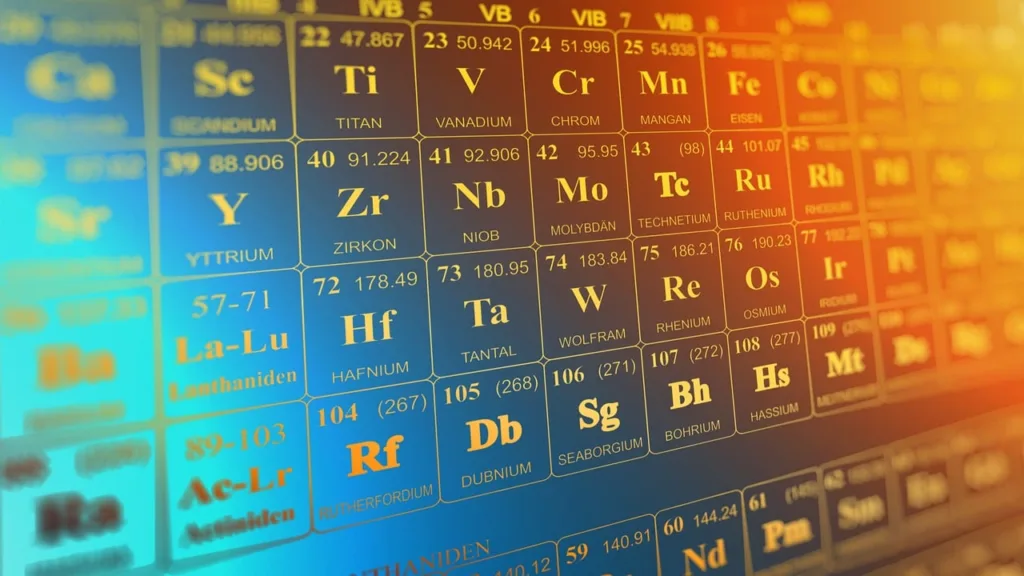Oganesson, also known as element 118, is a synthetic and highly radioactive element with the symbol Og and atomic number 118. It is classified as a noble gas, which is a group of chemical elements that are known for thir low reactivity due to their stable electron configurations.
The noble gas group, also known as group 8A or VIIIA, includes six elements: helium, neon, argon, krypton, xenon, and radon. These elements are characterized by their full valence electron shells, which make them stable and unreactive. They are also known as inert gases, as they do not typically form chemical bonds with other elements.
Oganesson was first synthesized in 2002 by a team of Russian and American scientists, and its discovery was officially recognized in 2015 by the International Union of Pure and Applied Chemistry (IUPAC). Due to its high atomic number and the instability of its nuclei, oganesson has a very short half-life of less than a millisecond.
Despite its classification as a noble gas, there is some debate among scientists as to whether oganesson should be considered truly noble. This is because its large size and high atomic number can cause significant relativistic effects on its electrons, which can make it more reactive than other noble gases. However, more research is needed to fully understand the chemical properties of oganesson and its place in the periodic table.
Oganesson is currently classified as a noble gas, but its unique properties and high reactivity potential make it an interesting subject of study for chemists and physicists alike. As more research is conducted on this element, we may gain a better understanding of its place in the periodic table and its potential applications in various fields.
Why Is Og A Noble Gas?
Oganesson (Og) is classified as a noble gas because it belongs to Group 18 in the periodic table, which consists of the elements helium, neon, argon, krypton, xenon, and radon, all of which are classified as noble gases. Noble gases are characterized by their closed-shell electronic configuration, which means that their outermost shell is completely filled with electrons. This configuration makes them extremely stable and unreactive towards other elements, which is why they are also knwn as inert gases. However, it is important to note that oganesson’s chemical properties are still being studied and its classification as a noble gas may be subject to change based on new research findings.

What Is Oganesson Classified As?
Oganesson is classified as a noble gas. As per the periodic table of elements, noble gases are a group of chemical elements with similar properties. They are also known as inert gases due to their low reactivity with other elements. Oganesson is expected to be a gas at room temperature, which is a common characteristic of noble gases.
What Are The 7 Noble Gases?
Group 8A, also known as Group VIIIA, of the periodic table comprises the noble gases or inert gases. There are seven noble gases in total, including helium (He), neon (Ne), argon (Ar), krypton (Kr), xenon (Xe), and radon (Rn). These gases are called “noble” or “inert” beause they have a full outer electron shell, which makes them highly unreactive. This characteristic makes them useful in various applications such as lighting, welding, and cooling. Here is a list of the seven noble gases:
1. Helium (He)
2. Neon (Ne)
3. Argon (Ar)
4. Krypton (Kr)
5. Xenon (Xe)
6. Radon (Rn)
7. Oganneson (Og) – discovered in 2002 and is still being studied by scientists.
Is Oganesson The Heaviest Noble Gas?
Oganesson is currently considered the heaviest noble gas. It belongs to the group of noble gases, also known as group 18, in the periodic table. Oganesson has an atomic number of 118, making it the heaviest element ever created and the only superheavy element in the noble gas group. Its atomic weight is approximately 294, and its half-life is less than a millisecond. Therefore, due to its high atomic number and weight, Oganesson is considered the heaviest noble gas.

Conclusion
Oganesson is a highly radioactive element that was synthesized by scientists in 2002. It has an atomic number of 118 and is classified as a noble gas. However, due to relativistic effects, it is predicted to break the trend and be reactive instead of chemically noble. Oganesson is expected to be a gas at room temperature and has a half-life of less than a millisecond. It is the heaviest element ever created and the only superheavy element in the column of noble gases. While more research is needed to fully understand the properties and behavior of this element, its discovery and study have contributed greatly to our understanding of the periodic table and the elements that make up our world.
